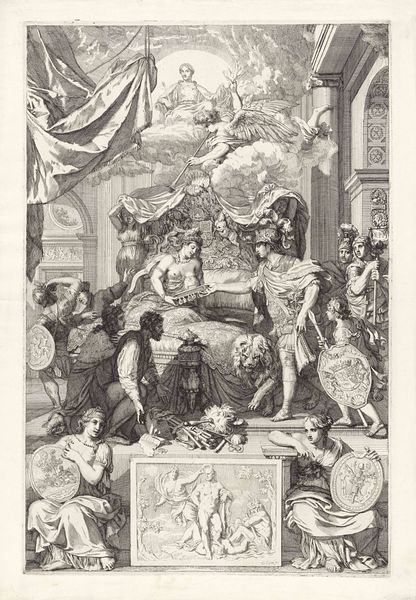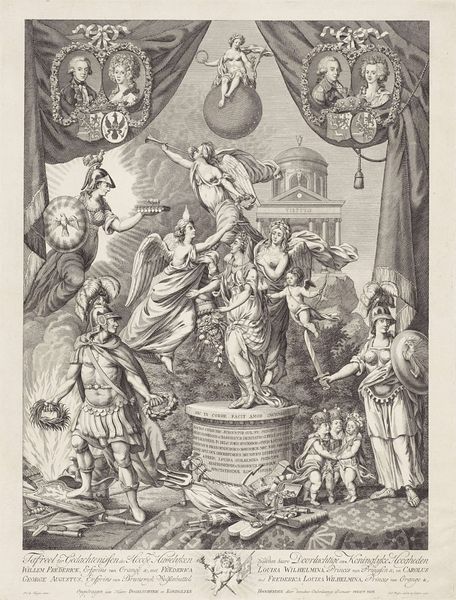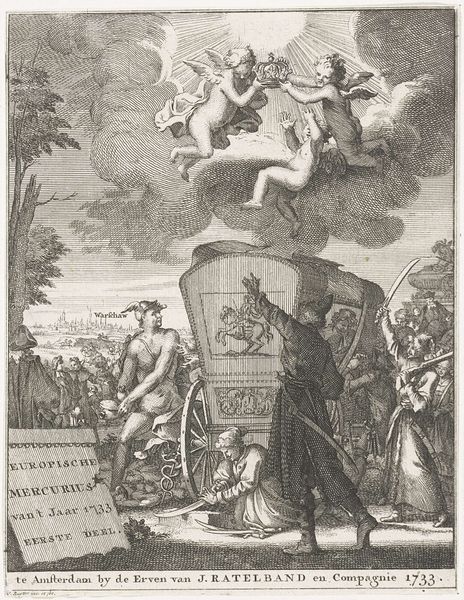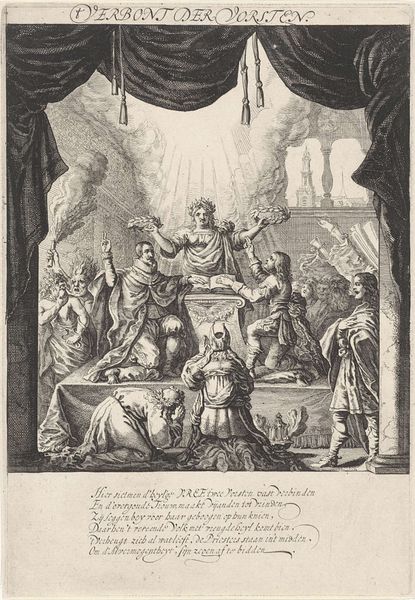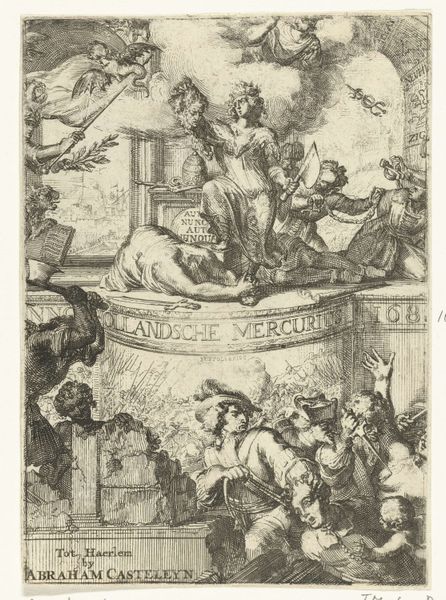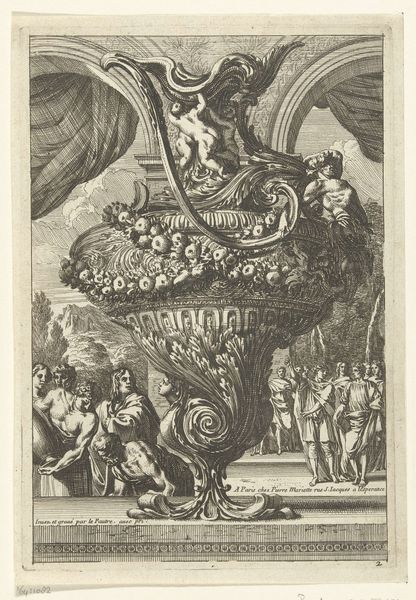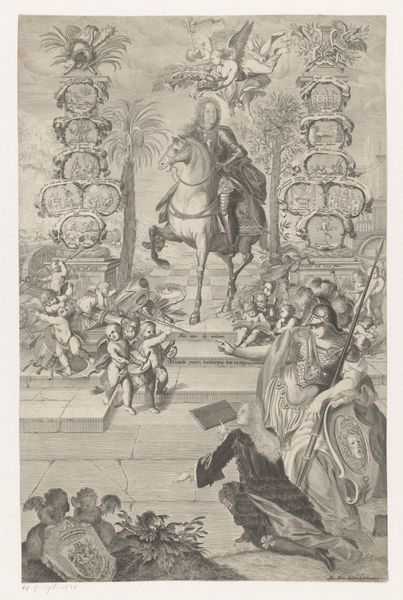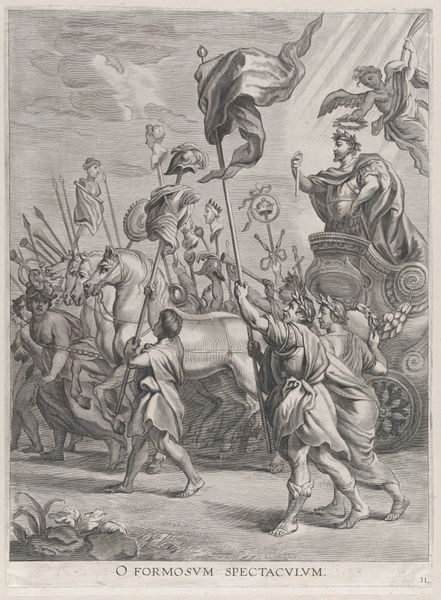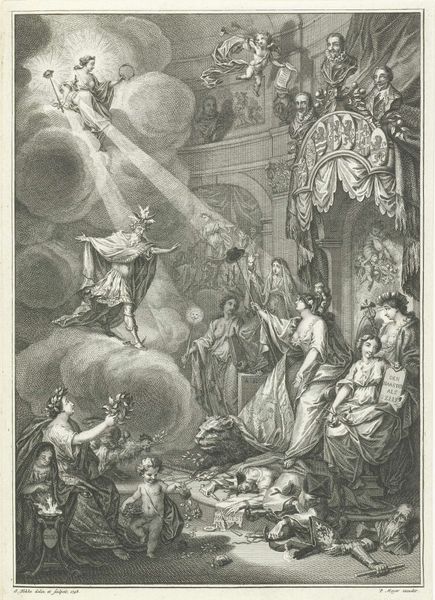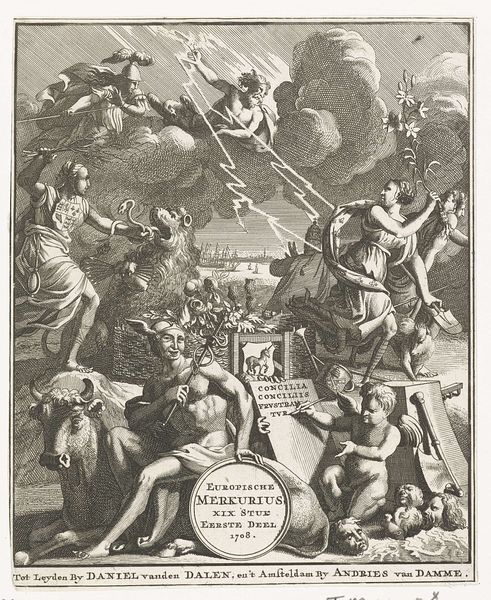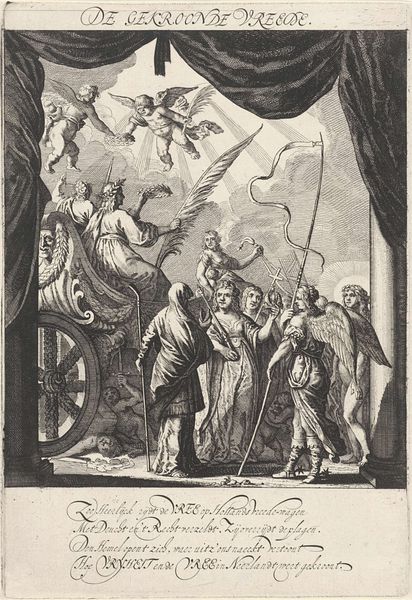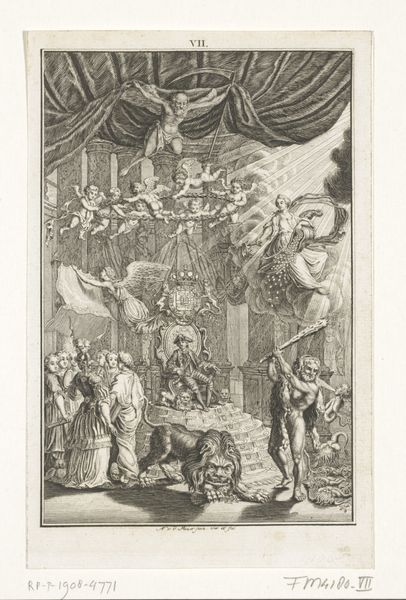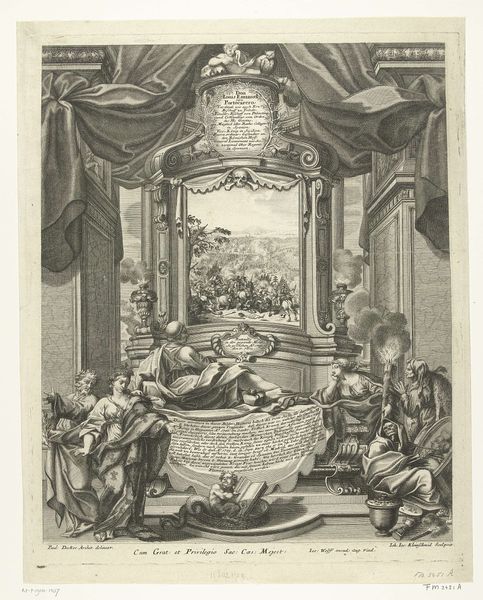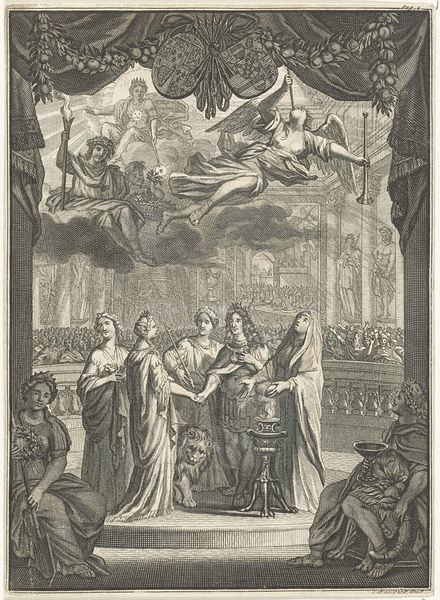
Zinneprent op de huwelijken van de zoon en dochter van Willem V, 1790-1791 1790 - 1791
0:00
0:00
Dimensions: height 186 mm, width 152 mm
Copyright: Rijks Museum: Open Domain
Editor: This engraving, "Zinneprent op de huwelijken van de zoon en dochter van Willem V" from 1790-1791, feels incredibly intricate. All the figures and details seem precisely placed. I’m curious, looking at this from your perspective, what stands out? Curator: As a materialist, I’m drawn to the context of printmaking itself during this period. This engraving was likely produced in multiples. Who was the intended audience, and how did the availability of this print shape the perception of the royal marriages? Editor: So, it's not just the image itself, but how it was distributed? Curator: Exactly! Consider the labor involved – the engraver’s skill in translating an image into lines on a metal plate. This act of reproduction, of democratizing an image of power, raises questions about consumption and the social impact of visual media. How did access to this kind of imagery shape public opinion during that era? Editor: That’s interesting. I hadn’t thought about the print as an object of consumption, a manufactured good almost. Do the materials themselves – the paper, the ink – tell us anything about the social status of who might own it? Curator: Absolutely. The quality of the paper and ink would reflect the cost of production, influencing its accessibility to different social classes. A wealthy individual might own a finer impression, while a poorer citizen might acquire a less refined, cheaper version. Furthermore, who profited from this printmaking operation? Editor: So you're seeing layers of social and economic relationships embedded in this single image. The work isn’t just an illustration, it is a social and economic artifact. Curator: Precisely! By understanding how these prints were made, distributed, and consumed, we gain insight into the broader societal structures of 18th-century Netherlands. Editor: That has reshaped how I think of engravings and other printed works. It encourages a new approach to looking at how materials and production are shaping the way a particular artwork transmits its messages and impact on a wider society.
Comments
No comments
Be the first to comment and join the conversation on the ultimate creative platform.
